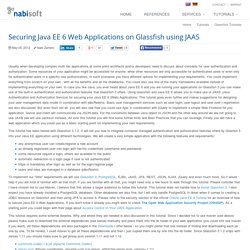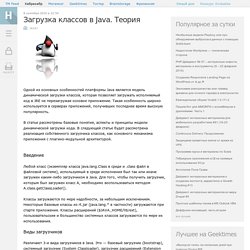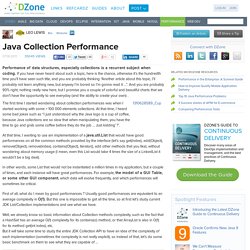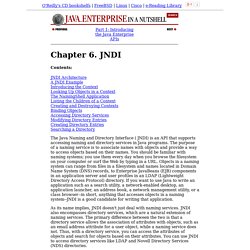

Securing Java EE 6 Web Applications on Glassfish using JAAS. Usually when developing complex multi tier applications at some point architects and/or developers need to discuss about concepts for user authentication and authorization.

Some resources of your application might be accessible for anyone, while other resources are only accessible for authenticated users or even only for authenticated users in a specific role (authorization). In such scenarios you have different options for implementing your requirements. You could implement everything from scratch on your own - with all the benefits and all the drawbacks. You could also use one of the many frameworks available instead of implementing everything on your own. In case you like Java, you ever heard about Java EE 6 and you are running your applications on Glassfish 3 you can make use of the built-in authentication and authorization features that Glassfish 3 offers.
This tutorial has been tested with Glassfish 3.1.2. This tutorial requires some external libraries. Table of Contents: Загрузка классов в Java. Теория / Хабрахабр. Одной из основных особенностей платформы Java является модель динамической загрузки классов, которая позволяет загружать исполняемый код в JRE не перезагружая основое приложение.

Такая особенность широко используется в серверах приложений, получивших последнее время высокую популярность. В статье рассмотрены базовые понятия, аспекты и принципы модели динамической загрузки кода. В следующей статье будет рассмотрена реализация собственного загрузчика классов, как основного механизма приложения с плагино-модульной архитектурой. Введение. Apache Thrift Tutorial. Jvm serializers. Java collection framework - Set, List and Map Interfaces in Java ~ Java, Struts 2, Spring, Hibernate, Solr, Mahout and Hadoop Tutorials Tips and Tricks.
In this particular blog we will talk about a very useful and important part of Java language i.e.

Collection framework. Collection framework provides interfaces and class implementations that enable data handling easy and meaningful. Using collections one can store, retrieve and manipulate the data very effectively and easily. Before we start lets first discuss the Architecture of Collection framework and hierarchy of Classes and Interfaces. Collection Interface The Collection Interface resides at the top of the Hierarchy, although Java does not provides a direct implementation of Collection framework but Collection Interface is being implemented by List and Set Classes.
Set Interface A set is a Interface that does not contain duplicate values. 1) HashSet 2) TreeSet 3) LinkedHashSet 1) HashSet HashSet is the best performing implementation of Set interface. Java Collection Performance. Performance of data structures, especially collections is a recurrent subject when coding.

If you have never heard about such a topic, here is the chance, otherwise it’s the hundredth time you'll have seen such title, and you are probably thinking “Another article about this topic, I’ll probably not learn anything new, but anyway I’m bored so I’m gonna read it …”. And you are probably 90% right, nothing really new here, but I promise you a couple of colorful and beautiful charts that we don’t have the opportunity to see everyday (and the ability to create your own) . The first time I started wondering about collection performances was when I started working with some > 100 000 elements collections. At that time, I heard some bad jokes such as “I just understood why the Java logo is a cup of coffee, because Java collections are so slow that when manipulating them, you have the time to go and grab some coffee before they do the job … Just kidding’ !”.
02. 04. collection.clear(); Справочник по Java Collections Framework. Данная публикация не является полным разбором или анализом (не покрывает пакет java.util.concurrent).

Это, скорее, справочник, который поможет начинающим разработчикам понять ключевые отличия одних коллекций от других, а более опытным разработчикам просто освежить материал в памяти. Getting Started with Java IDL. Java™ IDL is a technology for distributed objects – that is, objects interacting on different platforms across a network.

Java IDL enables objects to interact regardless of whether they're written in the Java programming language or another language such as C, C++, COBOL, or others. This is possible because Java IDL is based on the Common Object Request Brokerage Architecture (CORBA), an industry-standard distributed object model. Удаленный вызов методов (RMI) — Thinking In Java Enterprise (русский перевод) - JavaTutor.Net.
Традиционный подход к выполнению кода на других машинах, разнесенных по сети может смутить из-за своей нудной и склонной к ошибкам реализации.

Лучший способ рассмотреть эту проблему состоит в предположении, что некоторые объекты располагаются на другой машине, и что вы можете посылать сообщения этим удаленным объектам и получать результат, как будто они располагаются на вашей локальной машине. Это упрощение в точности является тем, что позволяет делать Удаленный Вызов Методов (RMI) в Java. Этот раздел сделает обзор шагов, необходимых для создания вашего собственного RMI объекта. Удаленный интерфейс RMI делает тяжелым использование интерфейсов. JNDI. The Java Naming and Directory Interface ( JNDI) is an API that supports accessing naming and directory services in Java programs.

The purpose of a naming service is to associate names with objects and provide a way to access objects based on their names. You should be familiar with naming systems; you use them every day when you browse the filesystem on your computer or surf the Web by typing in a URL. Objects in a naming system can range from files in a filesystem and names located in Domain Name System (DNS) records, to Enterprise JavaBeans (EJB) components in an application server and user profiles in an LDAP (Lightweight Directory Access Protocol) directory.
If you want to use Java to write an application such as a search utility, a network-enabled desktop, an application launcher, an address book, a network management utility, or a class browser--in short, anything that accesses objects in a naming system--JNDI is a good candidate for writing that application. Figure 6-1.